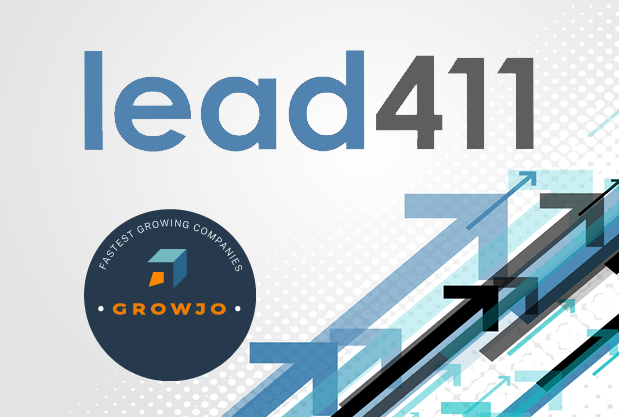Using AI for B2B Sales Outreach (Without Sounding Like a Robot)
Everyone’s Talking About AI in Sales
If you’re in B2B sales, you’ve probably heard the buzz about AI tools like ChatGPT, Jasper, and Claude. Sales teams everywhere are experimenting with them to write emails faster and reach more prospects. But here’s the thing—most people are still figuring out how to use these tools without their emails sounding like they were written by a machine.
The big question everyone’s wrestling with: How do you get the speed benefits of AI without sacrificing that personal touch that actually gets responses?
Making Personal Outreach Scalable
Here’s where AI actually shines. Instead of staring at a blank email template, you can feed AI specific details about your prospect—their job title, company size, industry challenges—and get a solid first draft to work from.
The key is having good data to begin with. When you have verified information about your prospects (like what Lead411 provides), you can create much more targeted prompts that produce better results.
Try something like this: “Write a casual email to a VP of Marketing at a 200-person SaaS company. They just raised Series B funding, so they’re probably thinking about scaling their team. I want to show them how our platform can help them build pipeline faster without adding headcount.”
See how much more specific that is than “write a cold email”? That’s the difference between generic AI output and something actually useful.
Subject Lines That Don’t Suck
Let’s be honest—getting someone to actually open your email is half the battle. This is another area where AI can help, but you need to use it smart.
Instead of settling for the first subject line AI gives you, ask it to generate 10-20 options. Then you can A/B test them across your sequences. We’ve seen teams get 15-25% better open rates this way, especially when they take the AI suggestions and add their own tweaks.
Avoiding the “AI Smell”
You know that feeling when you read an email and something feels… off? Maybe it’s too polished, or uses phrases no human would actually say? That’s what happens when people rely 100% on AI without editing.
Watch out for telltale signs like overly formal language or buzzword overload. If your email mentions “cutting-edge solutions” or “disruptive synergy,” you’ve probably gone too far into robot territory. Decision-makers get hundreds of these emails every week—they can spot the fake stuff from a mile away.
The Human-AI Partnership That Actually Works
Here’s what we’ve learned from teams that are doing this well:
Always edit what AI gives you. Use it to get the structure and main points, then rewrite it in your own voice. Think of AI as your writing assistant, not your ghostwriter.
Feed it better information. The more specific details you can provide about your prospect, the better the output. Tools like Lead411 give you the verified data you need to make your prompts actually useful.
Set clear boundaries. Tell the AI to keep emails under 100 words, use a conversational tone, and avoid industry jargon. The more constraints you give it, the better it performs.
What the Numbers Actually Show
We recently worked with a team that wanted to test this approach. They split their outreach into two groups: one where reps wrote everything manually, and another where they used AI-assisted emails (but still edited them).
The results? The AI-enhanced emails got 30% more replies and led to 22% more booked meetings. The biggest difference wasn’t the writing quality—it was that reps could personalize more emails and follow up faster because they weren’t starting from scratch every time.
Some Prompts That Actually Work
If you want to try this yourself, here are a few prompts that consistently produce good results:
For initial outreach: “Write a 3-sentence email to a CFO at a manufacturing company with 500+ employees. Focus on how automation could reduce their operational costs. Keep it conversational and mention that I’m not trying to sell them anything on this call.”
For follow-ups: “Write a short, friendly follow-up for someone who hasn’t responded in a week. Make it sound like I’m genuinely trying to be helpful, not pushy.”
For referral requests: “Help me write a polite email asking my contact if they can introduce me to whoever handles vendor partnerships at their company.”
The Privacy Stuff You Need to Know
Before you start feeding customer data into AI tools, make sure you understand your company’s data policies. If you’re dealing with European customers, GDPR matters. Don’t put personally identifiable information into public AI tools unless you’re using enterprise versions with proper privacy controls.
This is another reason why using verified, compliant data sources like Lead411 makes sense—you’re starting from a foundation that’s already been vetted for privacy and compliance.
The Bottom Line
AI isn’t going to replace good salespeople, but it can definitely make good salespeople more effective. The teams that are seeing real results aren’t just copying and pasting AI output—they’re using it as a starting point and then making it their own.
When you combine AI efficiency with verified prospect data and thoughtful editing, you get something powerful: the ability to reach more people with messages that still feel personal and authentic.
Want to try this approach? Start with good data, experiment with different prompts, and always remember to add your own voice to whatever AI gives you. The goal isn’t to sound like a robot—it’s to sound like yourself, just faster and more consistently.
Ready to give it a shot?
Get a Product Tour – 50 Free Phone Numbers/Emails to Test
Recent Posts
How Growjo and Lead411 Make B2B Prospecting Smarter
If you're using Growjo to discover high-growth companies, there's one tool that makes it even more powerful: Lead411. While Growjo helps identify fast-growing businesses based on hiring trends, funding, and traction, Lead411 takes it a step further by providing...
What in the World Is a Go-To-Market Strategy? (And Why ZoomInfo Is Butchering the Term)
Introduction: What Is a GTM Strategy? If you’ve ever Googled “What is a GTM strategy?”, you’ve likely been hit with a barrage of vague definitions, corporate buzzwords, and sales platforms claiming to be the answer to all your problems. But here’s the truth:...
The Best (and Worst) B2B Data Providers for Direct Dials in 2025
Let’s be blunt: most B2B data providers are failing you when it comes to accurate direct dial phone numbers. They may entice you during a trial with data they vet to make sure it's accurate, but once you are a paid customer, you soon find out you were duped on the...




